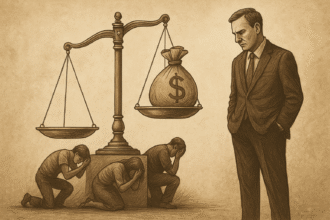In the real economy, the customer is the one who pays and demands value. In the public sector, the customer is the one who signs the agreement — with other people's money.
In any company, survival depends on pleasing the customer. It is the customer who decides whether the service is worth the price, whether the product is useful, whether the service is convincing. In the State, everything works the other way around: public structures sell services to each other — using public resources — and call this an institutional partnership.
Universities hiring foundations that are run by their own former professors. City governments outsourcing to NGOs run by former secretaries. Ministries signing “agreements” with state-owned companies that are already operating in the red. That’s what we call it. closed power circuit, where control is formal and the result rarely matters.
Money circulates, but does not leave the system
These operations are legally permitted and technically impeccable — full of opinions, rubrics and terms of reference. But their practical effect is different: they create a market illusion within the state machine, where everyone wins… except the citizen.
It is as if the State operated an internal economy, with contracts between its parties — but paid by those outside it.
This “parallel state economy” means that:
- Resources leave the Treasury, pass through public entities and return to other state structures, without real competition
- The same bureaucratic elite acts on different sides of the agreements
- And contracts are not the least bit concerned with cost-benefit, because the risk is always collective — and the profit is always concentrated.
When there is no real customer, there is no demand for results.
This logic does not hold up in the private sector because there the client can leave. In the public sector, the customer is captive — or rather, non-existent. And meanwhile, the rhetoric of “efficient management” covers up the lack of transparency with reports and acronyms.
The State that hires the State itself is not being accountable — it is just keeping its ecosystem alive.





